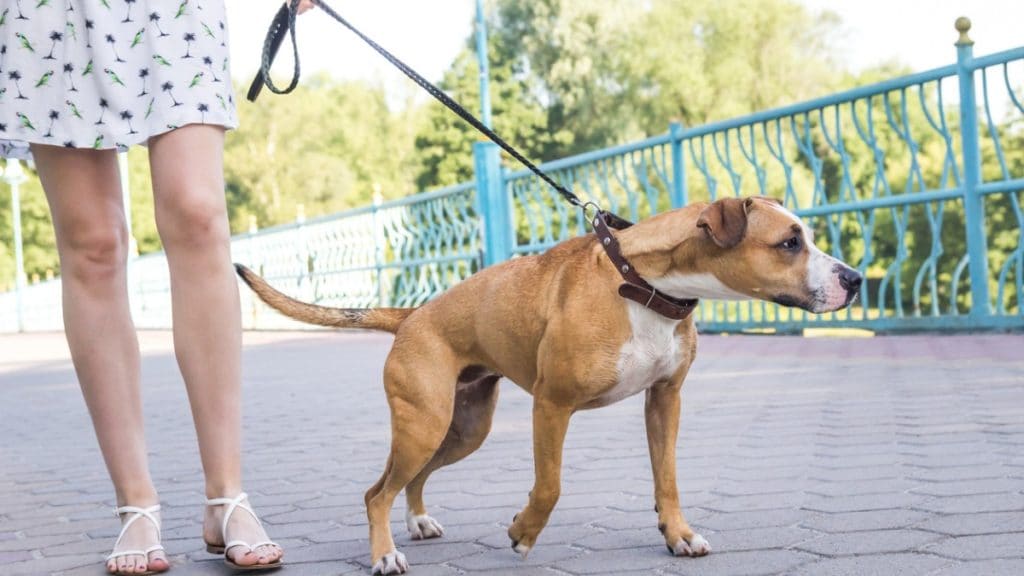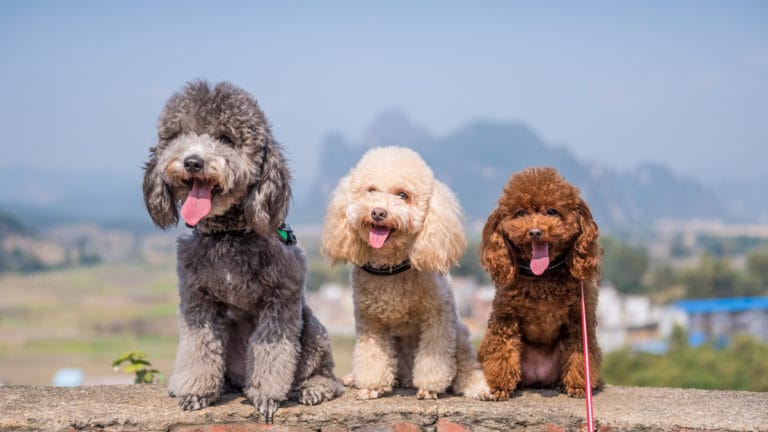Do you ever see a person walking their well-behaved dog on a leash and wonder, “How can I stop my dog from pulling on the leash?” With the right tools and patience, you can learn how to leash train a dog to remain calm while walking on a leash. Soon, you and your pup will be the envy of the neighborhood.
In This Guide
Why Is My Dog Pulling?
There's a very simple reason why dogs pull on their leash: They haven't been trained not to.
Dogs don't instinctively know leash manners, but they do have instincts that tell them to wander here and there to check out smells, sounds and other interesting things out in the world. Yanking the leash when they pull does nothing to overcome those urges, and probably also frustrates or upsets your dog. So how do we overcome those instincts? By offering them something even more enticing within leash's length.
Think of it this way: Leash training isn't about punishing your dog for being in the wrong place. It's about teaching your dog where to be.
Essential Leash Training Supplies
To begin leash training, make sure you have:
Smaller treats, like Pet Botanics training rewards treats, work well because you can feed your dog many of them during your session. A treat pouch isn't necessary, but it can be helpful to free up your hands so you can hold the clicker and the leash.
I recommend clipping the dog leash onto a dog harness instead of a dog collar. A quality front-clip harness can help prevent neck injury to pups and can assist you if the dog pulls unexpectedly.
How to Stop a Dog from Pulling
1Start in a small space.
2Give your dog some slack.
3Teach your dog that staying close = rewards.
Repeat this a few times so your dog learns that staying close pays well. Then take a small step forward and wait; most dogs will step forward with you.
When your dog steps forward, click and then feed. Repeat this process, gradually increasing how far you go with each step, until your dog steps forward with you each time. Click only when the leash is loose.
4Move to a larger training space.
Once your dog is good at this in the small space, move to a larger space and practice stepping forward, clicking and treating each time your dog moves with you. Then practice in a relatively calm outdoor space, like your yard.
“All of that’s very well,” you may say, “but once we’re out in the real world, we’re back in ‘dog pulling on leash’ mode.” To prevent this, limit how far you go on walks for the moment.
5Stop as soon as the pulling starts.
Only walk as far as you can while the dog leash stays in that nice smile shape. As soon as your dog starts pulling, turn around and go home.
You might walk up and down the front walk for several minutes at first, but as long as you keep turning around when your dog starts pulling on the leash, and click and treat every step when the leash is loose, your dog will learn to walk better.
Over the course of multiple walks, extend how far you go. I often ask clients to walk out to the sidewalk, turn right, go as far as possible on a loose leash, then turn around and go back to the door, then go out to the sidewalk again, turn left, and so on.
The key is to work within your dog’s limits. Once your dog is walking nicely outside when you click and feed every step, you can start to click and feed less often. With practice, you’ll be walking comfortably on leash together all over the neighborhood.
Troubleshooting Tips
If your dog is still pulling after following the above steps, consider these tips:
- Use a front-clip harness. Clipping the leash to the front of the harness can help deter some dogs from pulling more than clipping it to the top of the harness.
- Consider a head harness. I recommend these for very large dogs whose pulling is difficult to control.
- Consult a dog trainer. When all else fails, go to the pros! Here's how to find a great professional dog trainer.
Leash training takes time, but it's well worth it for pulling-free walks together. Looking for the best leash training supplies? Check out our guides:
Share:













